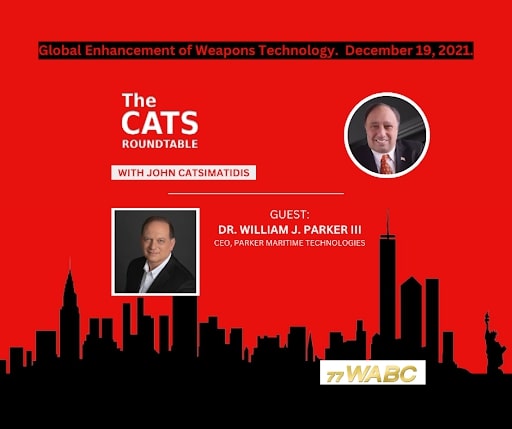Advancements in Weapons Technology: A Conversation with Dr. William J. Parker III
In this interview on the Cats Roundtable Show hosted by John Catsimatidis, Dr. William J. Parker III, CEO of Parker Maritime Technologies and former Chief of Staff of the U.S. Naval Surface Forces, discussed the evolving landscape of global weapons technology and the United States’ strategic advancements in this arena. The interview took place on December 19th, 2021, and delved into the state-of-the-art weaponry being developed by armed forces, particularly in comparison to emerging technologies from countries like China.
Maintaining Technological Edge
As the conversation began, the focus was on China’s reported developments in hypersonic weapons that have the capability to circumnavigate the globe and target specific locations with precision. Dr. Parker acknowledged China’s progress but emphasized that the United States has several key advantages in the realm of military technology.
Firstly, he highlighted the significant U.S. technology base, which has consistently allowed the country to stay ahead of global competitors in terms of weapon systems. Dr. Parker also acknowledged a dip in research and development during the Obama Administration but noted that these efforts have been revitalized under recent leadership.
Secondly, he discussed the inherent drive within the U.S. military to remain at the forefront of technological advancements. This thirst for innovation, combined with a commitment to leadership, has historically ensured that the U.S. military remains competitive in the international arena.
Laser Weapon Systems: A Game-Changer
The interview then shifted to discussing laser weapon systems, a technology that has shown remarkable progress in recent years. Dr. Parker traced the origins of laser weapons back to the 1960s when research laboratories began exploring their potential. He cited instances of the Navy’s involvement in testing high-power laser systems in the ’70s and later.
Highlighting the recent advancements, Dr. Parker mentioned that a laser weapon system with a power output of 150 kilowatts was successfully tested on the USS Portland, marking a significant leap from a 30-kilowatt system tested in 2014. He emphasized that multiple branches of the U.S. military, including the Navy, Air Force, and Army, are actively pursuing laser weapon technology, with notable advantages over conventional weapon systems.
Strategic Deterrence and National Security
In discussing the public disclosure of such technologies, Dr. Parker stressed the dual nature of maintaining secrecy while sending deterrent messages to potential adversaries. He likened it to the example of stealth aircraft, which were kept under wraps until their deployment during the Gulf War. He emphasized the need to strike a balance between keeping capabilities secret and sending clear messages about the nation’s military strength.
A Future Shrouded in Possibilities
Dr. Parker concluded the interview by expressing his confidence in the trajectory of U.S. military technology. While acknowledging that much remains undisclosed, he affirmed that the U.S. military possesses significant technological capabilities that serve as a strong deterrent against potential threats.
In this interview, Dr. Parker insights shed light on the intricacies of modern weapons development, strategic planning, and the delicate balance between secrecy and deterrence in today’s complex geopolitical landscape.




